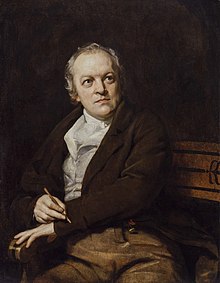
William Blake Page 3
We found 18 free papers on William Blake
Essay Examples
Overview
Short Poem “The Tyger”
Poem
The Tyger
“The Tyger” by William Blake is a renowned poem that adeptly showcases the impact of poetic devices, as well as sound and rhythm, on a poem’s meaning. Blake raises inquiries regarding the nature of God and faith through two significant rhetorical questions within the poem. One questions whether God is responsible for both goodness and…
Social Issue, Symbols, and Themes of Blake’s “the Chimney Sweeper” Poems Analysis
Poem
The Chimney Sweeper
Social Issue, Symbols, and Themes of Blake’s “The Chimney Sweeper” Poems During the seventeenth century, people in England substituted burning wood with coal to use their fireplaces to avoiding paying hearth taxes. The burning of coal left soot on the interior walls of the fireplaces that needed to be removed to keep the fireplaces clean….
| born | November 28, 1757, Soho, London, United Kingdom |
|---|---|
| died | August 12, 1827, London, United Kingdom |
| description | William Blake was an English poet, painter, and printmaker. Largely unrecognised during his life, Blake is now considered a seminal figure in the history of the poetry and visual art of the Romantic Age. |
| books | Songs of Innocence and of Experience 1789, The Tyger 1794, The Illuminated Books of William Blake 1974 |
| education | Royal Academy of Arts |
| quotations | Read our favourite William Blake quotes below: “To see a World in a Grain of Sand. “It is easier to forgive an enemy than to forgive a friend.” “A truth that’s told with bad intent. “If a thing loves, it is infinite.” “If the doors of perception were cleansed every thing would appear to man as it is, Infinite. “Tyger! |
| information | Short biography of William BlakeWilliam Blake was an English poet and painter, considered one of the most important of the Romantic poets. Blake was born in London on November 28, 1757, to a family of artisan goldsmiths. His parents were Dissenters and he was educated at home until he was ten. At that age, he was sent to a small boarding school in the Strand, where he learned to read and write.In 1767, Blake began apprenticing with an engraver. He also attended drawing classes at the Royal Academy. In 1779, he completed his apprenticeship and began working as a professional engraver.In 1782, Blake met a girl named Catherine Boucher. They married in 1782 and had eight children, only two of whom survived to adulthood. In 1784, Blake published his first book of poetry, Poetical Sketches. This was followed by Songs of Innocence in 1789 and Songs of Experience in 1794. Blake also illustrated these works himself. In 1793, Blake started having visions and began to see the world in a different way. He believed that the spiritual and material worlds were intertwined.In 1800, Blake moved to Felpham, a village in Sussex, to work as a book Illustrator. While living there, he wrote the poems that would eventually be collected as Milton: A Poem (1804) and Jerusalem: The Emanation of the Giant Albion (1804-1820).In 1803, Blake was arrested and tried for sedition after he was found to have inscribed the words “I will not cease from Mental Fight, Nor shall my Sword sleep in my hand” on the door of his cottage. He was acquitted, but the event had a profound effect on him.In 1818, Blake moved back to London. He continued to write and illustrate until his death on August 12, 1827. General Essay Structure for this Topic
Important informationArtworks: The Ancient of Days, The Ghost of a Flea, Newton, The Night of Enitharmon’s Joy On view: National Gallery of Art, Los Angeles County Museum of Art Periods: Symbolism, Romanticism Spouse: Catherine Blake (m. 1782–1827) |

